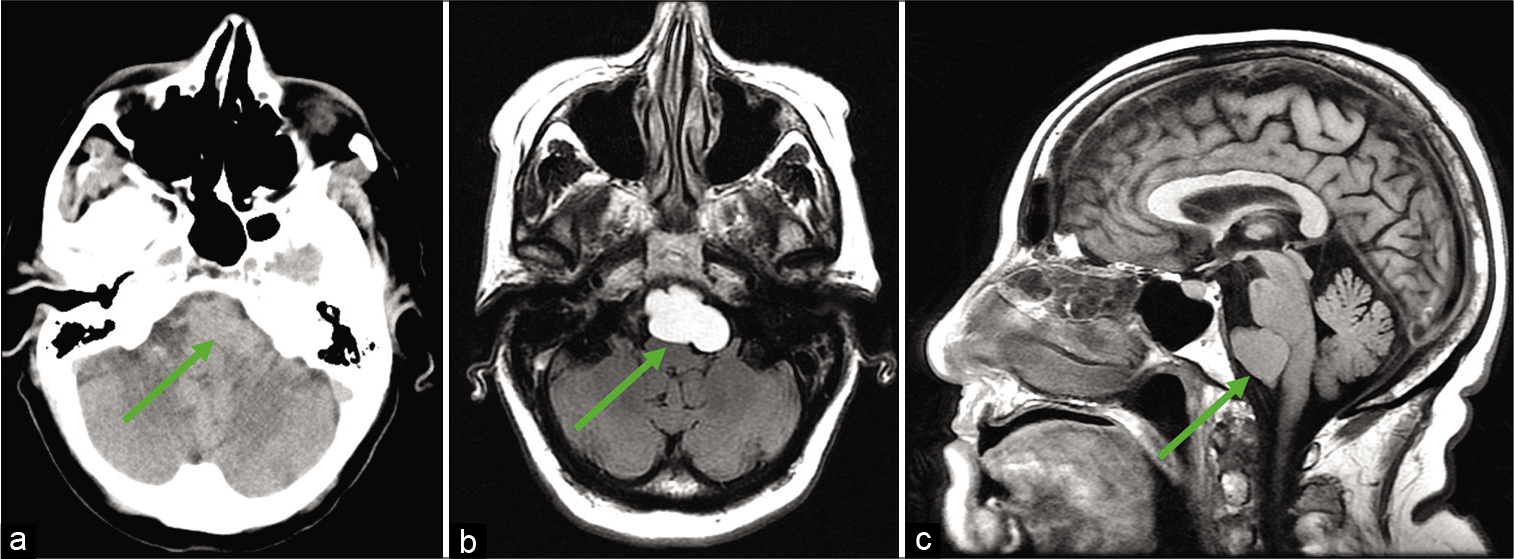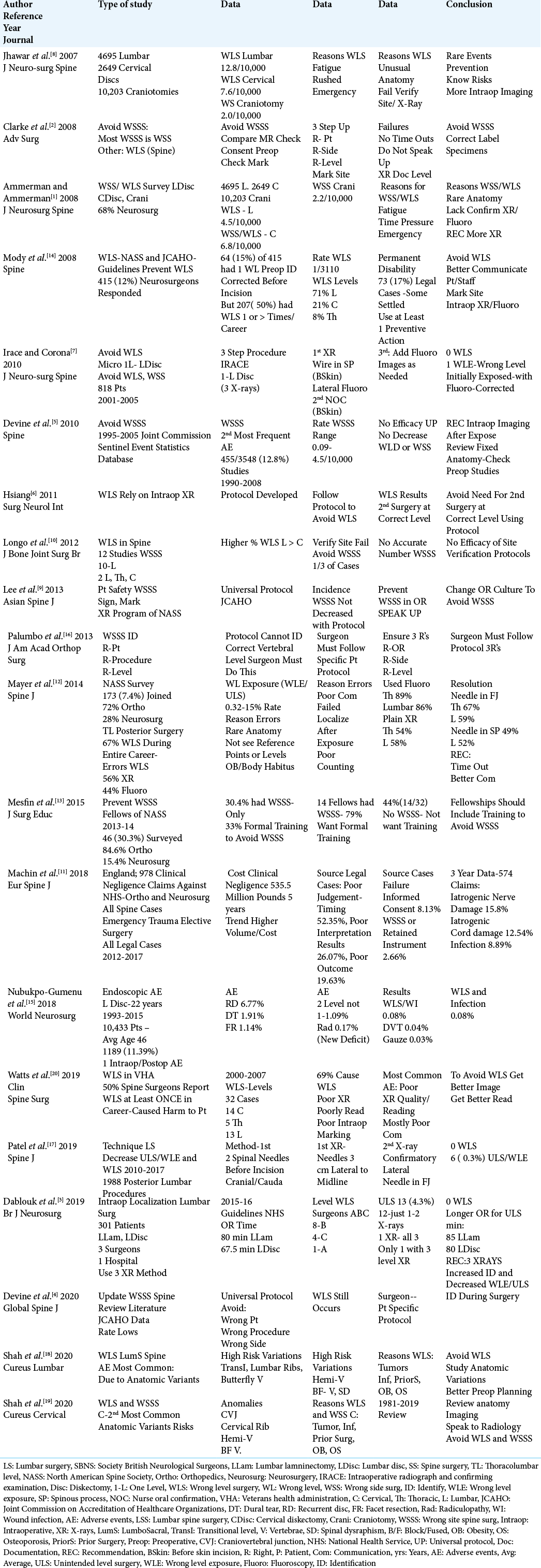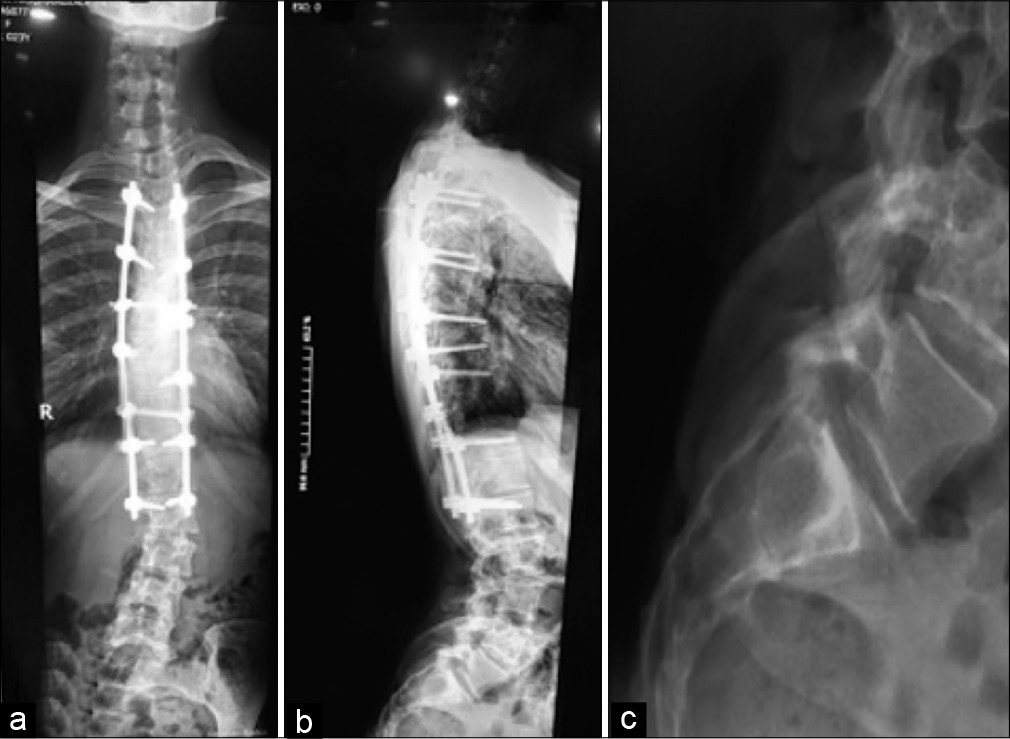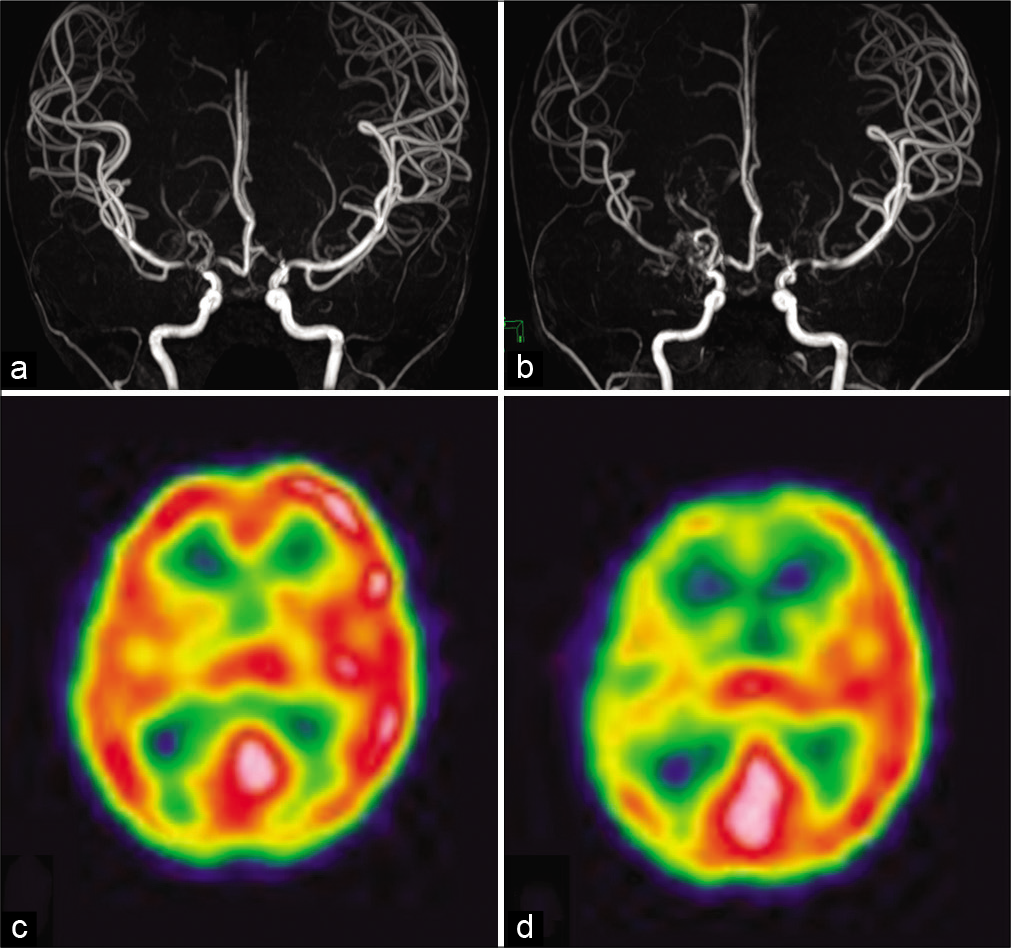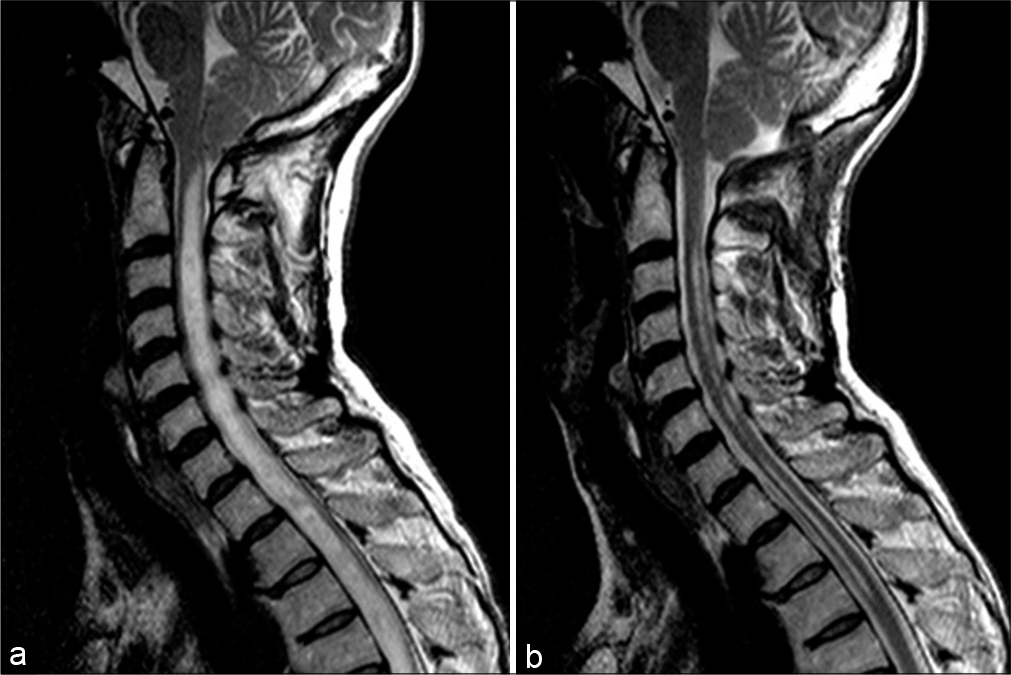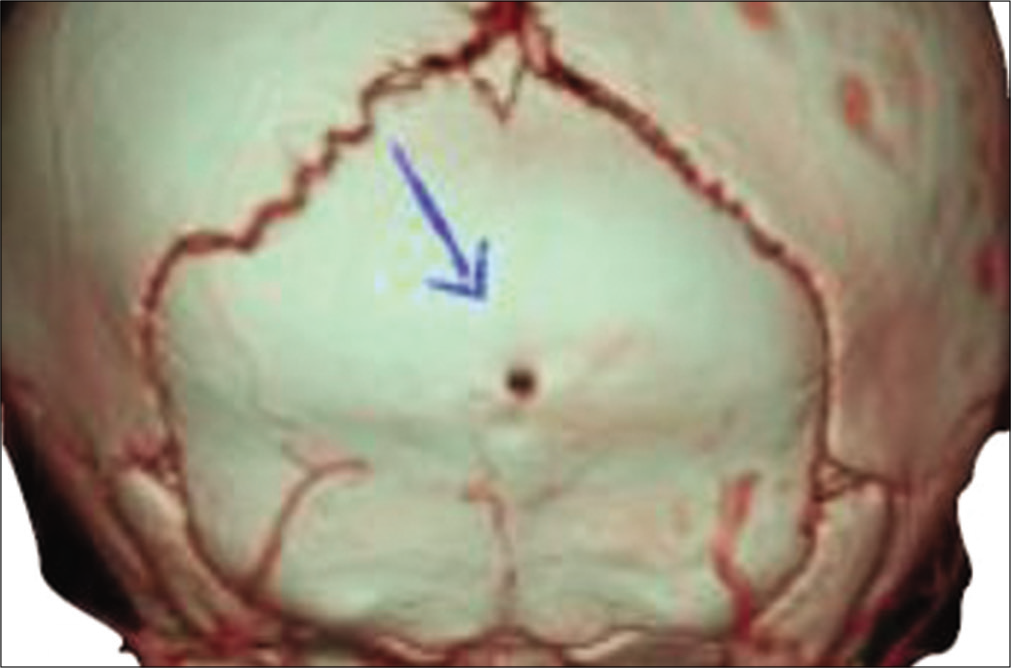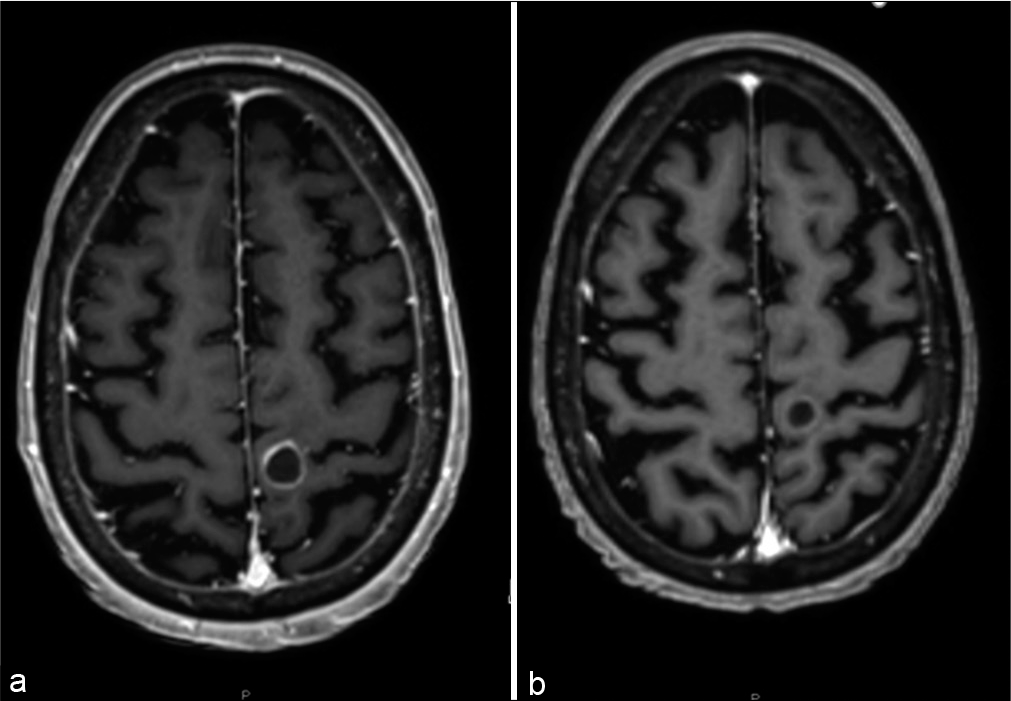Helicobacter cinaedi-infected chronic subdural hematoma mimicking an expanding hematoma: A case report
Date of publication: 14-Jun-2021
Background: We present the rare case of a spontaneous intracranial subdural empyema caused by Helicobacter cinaedi in a preexisting chronic subdural hematoma (CSDH).
Fenestration of intracranial neurenteric cyst: A case report
Date of publication: 14-Jun-2021
Background: Neurenteric cysts are rare congenital lesions of endodermal origin which result from the failure of the neurenteric canal to close during embryogenesis. The majority of neurenteric cysts occur in the spinal cord, though in rare instances can occur intracranially, typically in the posterior fossa anterior to the pontomedullary junction (80%) or in the supratentorial region adjacent to the frontal lobes (20%).
A perspective on wrong level, wrong side, and wrong site spine surgery
Date of publication: 14-Jun-2021
Background: Four of the most common “errors” in spine surgery include: operating on the wrong patient, doing the wrong procedure, performing wrong-level surgery (WLS), and/or performing wrong-sided surgery (WSS). Although preoperative verification protocols (i.e. Universal Protocol, routine Time-Outs, and using the 3 R’s (i.e. right patient, right procedure, right level/side)) have largely limited the first two “errors,” WLS and WSS still occur with an unacceptably high frequency.
Anaplastic myxopapillary ependymoma of the sacrum: A case report
Date of publication: 14-Jun-2021
Background: Myxopapillary ependymoma (MPE) with anaplastic features is extremely rare. There are very few such case reports in the medical literature.
Case of de novo cerebral microbleeds in ischemic-type pediatric moyamoya disease
Date of publication: 14-Jun-2021
Background: Studies on pediatric patients with moyamoya disease who presented with de novo cerebral microbleeds (CMBs) are extremely rare.
Symptomatic Chiari type 1 malformation associated with acromegaly: A case report
Date of publication: 14-Jun-2021
Background: Here, we report a patient who presented with both symptomatic acromegaly and symptomatic Chiari I malformation (CM1) with a C2-T5 syrinx.
Infratentorial abscess secondary to dermal sinus associated with dermoid cyst in children: Review of the literature and report of a rare case
Date of publication: 14-Jun-2021
Background: Dermal sinus is usually located at either end of neural tube but most commonly lumbosacral. When occipital, it extends caudally and is mostly localized in the midline position or in the cavity of the fourth ventricle. It could communicate with the skin through a fistula with potential risk of deeper abscesses. Posterior fossa abscess secondary to dermal sinus associated with intracranial dermal cyst is an uncommon pathology.
Severe hypotension with loss of motor evoked potentials during cervical surgery prompting immediate cardiovascular resuscitation
Date of publication: 14-Jun-2021
Background: Intraoperative neuromonitoring (IONM) is a well-established adjunct to spinal surgery to ensure safety of the neural elements.IONM has extremely high sensitivity and specificity for impending neurologic damage. In very rare instances, hypoperfusion of the cord may lead to a loss of IONM modalities that may be reversed if blood pressure issues responsible for the drop out of potentials are immediately addressed.
Pulsed reduced dose-rate radiotherapy for previously irradiated tumors in the brain and spine
Date of publication: 14-Jun-2021
Background: Patients with unresectable locoregional cancer recurrences have limited management options. Reirradiation increases the risk of toxicity, particularly when perilesional dose-volume constraints are exceeded. We present and discuss two cases of previously irradiated tumors in the central nervous system (CNS) that was reirradiated using the pulsed reduced dose-rate radiotherapy (PRDR) technique.
Endoscopic resection of a low-grade ependymoma of the pineal region
Date of publication: 14-Jun-2021
Background: Full endoscopic resection of solid brain tumors represents a challenge for neurosurgeons. This can be achieved with modern technology and advanced surgical tools.



